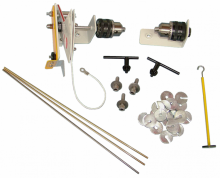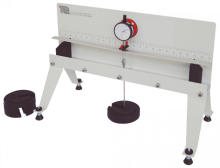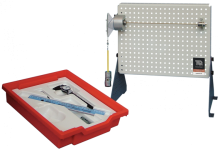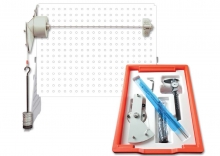Torsion Testing Components

An additional set of components and specimens for the TE16 to allow elastic torsion tests to be done.
One of a range of experiment modules that fit to the Structures platform Structures platform STS1 (available separately), this product helps students to understand the torsional elastic properties of circular sections (tubes and solid rods). Students choose from a selection of test rods and fit them between two collet ‘chucks’. They may adjust the distance between the chucks for tests on varying rod length. Each chuck includes pointers that work with the scale on the platform for accurate positioning.
Students apply angular deflection to the specimen using a chuck which includes a precision potentiometer to measure the angular defl ection. The other chuck connects to a load cell to measure the resulting torque. Students use textbook beam equations to predict the deflection and torque relationship and compare the calculated results with the measured results. This helps confirm the reliability of the textbook equations and the accuracy of the experiment results.
This product includes a set of rods of different metals and a tube for comparison of the elastic properties, dimensions and polar second moment of area (‘J’ value). It also allows the student to vary the eff ective length of the rods to see how this aff ects the magnitude of deflection for a given torque.
The potentiometer and load cell connect to the USB interface hub of the Structures platform for computer display and data acquisition.
*There are 21 different experiments in the Next Generation Structures range.

An additional set of components and specimens for the TE16 to allow elastic torsion tests to be done.

A bench mounting 3-point bend apparatus to allow investigations into the stiffness in bending of different materials of the same cross-section (Young's Modulus - Stiffness) and the stiffness of a single material with different cross-section geometries (Second Moment of Area - 'I' Value).


TecQuipment's Torsion of Circular Sections Kit (ES5) Demonstrates the torsion in circular section specimens of different materials and lengths.
